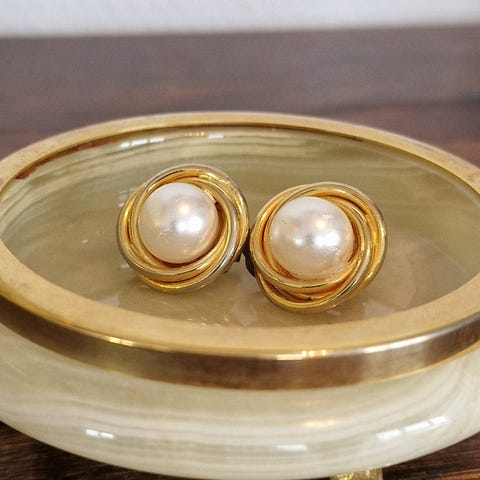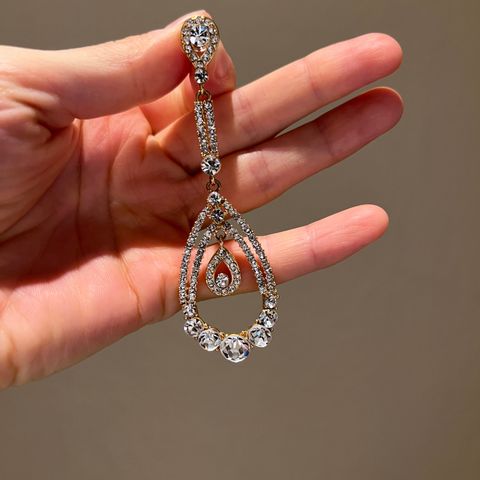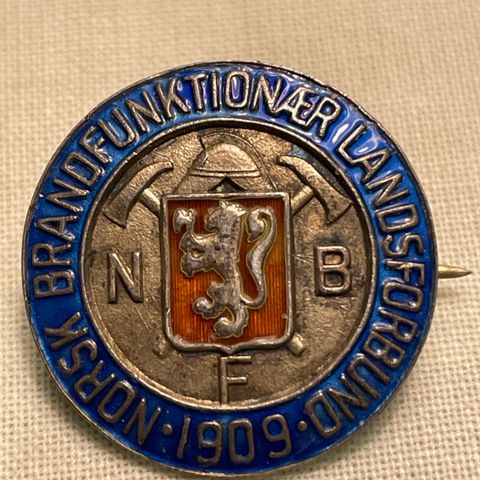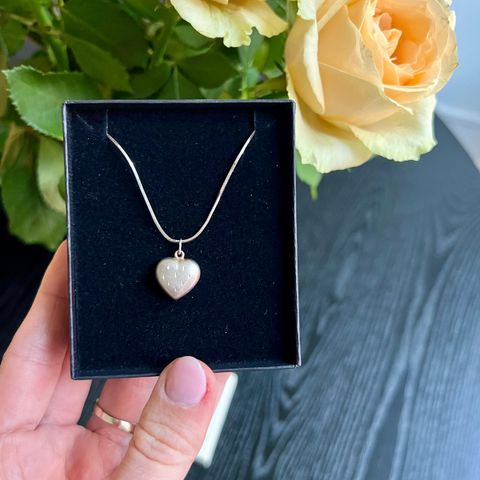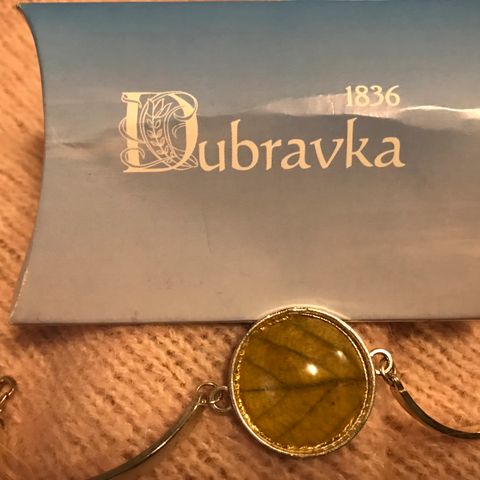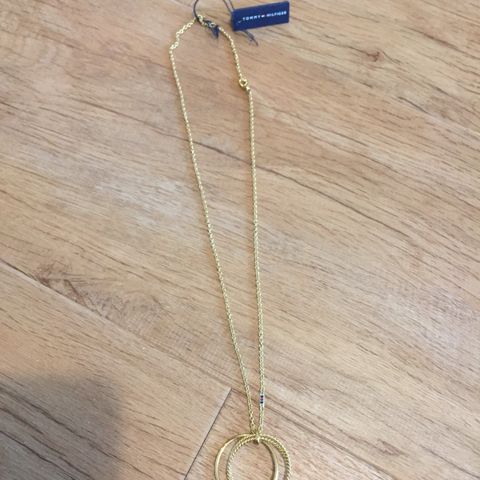Bildegalleri
Sølvfarget Veivisiren Kjede Og Ring.
Beskrivelse av varen
Tilstand: Helt ny - Uåpnet/med lapp
Hovedmateriale/stein: Sølv
Annet materiale /stein: Sølv
Hei jeg selger et sølvfarget kjede av Veivisiren symbolet.
Vegvisir Nordisk Symbol
Sjekk ut mine andre annonser med Veivisir, jeg har ringer, kjeder, mynter, store Veivisir i smijern jeg har gullfarget sølvfarget sorte og mye annet.
The Vegvisir dette symbolet er ment til å få en person til å alltid finne veien sin hjem. Det er magi sånn som vikingene brukte. Antagligvis har dette symbolet sine røtter i eldre tider men med et 700 år med kristendom og forfølgelse og brenning av alle bøker med magi, som heracy. Og isteden for å passe på at historien ble beholdt ble bøkene brent og ingen kopiert. og Icelandic for "wayfinder", lit. 'way shower') is an magical stave intended to help the bearer find their way through rough weather. The symbol is attested in the Huld Manuscript, collected in Iceland by Geir Vigfusson in Akureyri in 1860,[1] and does not have any earlier attestations.
The vegvísir according to the Huld manuscript
A leaf of the manuscript provides an image of the vegvísir, gives its name, and, in prose, declares that "if this sign is carried, one will never lose one's way in storms or bad weather, even when the way is not known".[2][1]
Stephen E. Flowers lists the Vegvisir in his translation of the Galdrabók,[3] but in a later publication cites it in “Isländische Zauberzeichen und Zauberbücher” by Ólafur Davíðsson rather than the Galdrabók.[4] Tomáš Vlasatý claims that it is not only in the Huld manuscript but also in two other Icelandic grimoires, Galdrakver (designated Lbs 2917 a 4to and Lbs 4627 8vo) and has Christian roots.[5]
Etymology
edit
Vegvísir is a compound word formed from the two Icelandic words, vegur and vísir. Vegur means 'way, road, path' (lit. 'way'), and vísir, inflection form of vísa, 'to show, to let know, to guide' (lit. 'show + -er').
Vegur is derived from the Old Norse vegr, Proto-Germanic *wegaz, or the Proto-Indo-European *weǵʰ-.
Vísir is derived from the Old Norse vísa meaning 'to show, point out, indicate', or the Proto-Germanic wīsōną or wisaz, meaning 'to visit'.[6][7][8][9]
Vegur ('way') + vísir ('pointer') derives its meaning from the same word as the English wise. It points someone the right way.[1
Vegvisir Symbol
by Sons Of Vikings Mon, Mar 01, 21
The Vegvisir. One of the most beloved ...and despised symbols within the Viking community.
Because this symbol is known as 'The WayFinder' …and because it comes to us from Iceland (which was originally founded and populated by Vikings), a popular nickname for this symbol has since become the 'Viking Compass' or the ‘Norse Compass'.
With that said, it is completely fair to acknowledge upfront that there is indeed zero proof that this symbol was ever actually used by the Vikings.
The reason being is that the oldest known mentioning of this symbol is found within three different 19th-century Icelandic books which are a collection of ancient magic, spells, runic alphabets and magical symbols and sigils.
Anyone sharing the above facts would be making an accurate and fair statement.
However ...it is the newly popular assumption that it would be impossible for this symbol to have been passed down through the years from their Norse ancestors, because it is considered a “Christian magic” symbol that we would like to challenge.
And yes, we are well aware of the online articles that make this claim. Some of them are actually written by friends of ours who have written for our Viking History blog and in whom we highly respect. However, we personally propose that there is a LOT more to the story (including the assumed connection to the Solomon symbols).
There are two main reasons why people believe this is a “Christian magic” symbol:
1) These three Icelandic magic books, that are the first in history to contain the Vegvisir symbol, do indeed connect a Christian message of Christianity (in ONE of the three books …the youngest of the three):
“To avoid getting lost: keep this sign under your left arm, its name is Vegvísir and it will serve you if you believe in it – if you believe in God in the name of Jesus – the meaning of this sign is hidden in these words, so you may not perish. May God give me luck and blessing in the name of Jesus.”
These Icelandic magic books are indeed a strange mixture of various beliefs, but it is important to note that all three books are also chock full of Norse magic, Norse gods and Norse mythology. This last point is rarely (if ever) mentioned by the critics of this symbol …which further leaves the implication that these three books are primarily about 'Christian magic'.
A more honest take would be to acknowledge that this type of blending of the two extremely different cultures (Norse paganism and Christianity) was not only extremely prevalent in 19th century Iceland, but such blending can be traced all the way back to the Viking age.
2) The second reason people claim this is a Christian symbol is that the image is very similar to what many refer to as the Solomon symbols. Problem with this assumption is there is no true exact match, only (somewhat) similarities. Which, by the way, there are some detailed drawings from the 16th century of two gold plated drinking horns found in Denmark which include virtually the exact same (somewhat) similar symbols. But hey that doesn’t fit the narrative, does it?
Our point? Making this ‘Solomon symbols’ connection is no less an assumption than assuming the symbol may have been passed down through the years by their Norse ancestors. As well, these "Solomon" symbols are actually considered Kabbalah, not Christian.
To start with, it is important to point out that even if the 'Christian origin' theory was correct (which we challenge below), it would still be a ridiculous argument to say that this alone would somehow prove it could not have been a symbol passed down by their Norse ancestors. Why? Because those very same Viking ancestors were already heavily blending Christianity (and other foreign beliefs) into their Norse culture by the end of the Viking age. Anyone who has studied Viking history knows this.
There are multiple runestones that were commissioned by Viking kings to dedicate their land to Christ. In fact, the percentage of Viking runestones that include elements of Christianity is WAY higher than most people realize. Whether or not those Christian conversions were sincere or for political reasons will forever be debated. But the belief that anything related to Christianity immediately means it has nothing to do with Viking history is grossly incorrect.
So why does one of the three books specifically mention Christianity with this symbol? We propose that it is possible they did so for one of two reasons:
1) They were simply guilty of connecting an older pagan symbol (of unknown age and origin) within a '19th century Icelandic Christian context'.
An example of this can be found in another Icelandic manuscript when Helgi the Lean, one of the Viking founders of Iceland (as reported in the Book of Settlements) summed up his 'blended' faith,
“On land I pray to Christ, but on the stormy sea I pray to Thor.”
This above statement comes from another Icelandic manuscript ...far closer to the actual Viking age (12th century), and yet no one reads this quote and claims, "This proves that Thor is connected to Christianity."
This one example (of many) proves our point that it is certainly possible that such blending of two opposing beliefs were very common during the post-Viking age, Icelandic culture.
Or 2) a second theory is that it is well known and documented that practitioners of magic have historically believed that blending two OPPOSING forces together (such as a pagan symbol and a Christian prayer) adds ‘extra power’ to their magic. This belief is still practiced today in modern day magic.
A well known example of this would be how elements of Catholicism are included in voodoo rituals. Even though the vast majority of voodoo elements are primarily based on historic African religious practices, such as animism and spiritism (and have literally nothing to do with the teachings of Christ).
Again, this supports the idea of these magic practitioners purposely diverging two completely opposing forces together in belief of creating a stronger power behind what they are doing.
Side note: Voodoo today includes its own collection of symbols known as veves. Now imagine someone posting a picture of their new veve tattoo and having people ridicule them saying, "Ummm, you do know that is actually a Christian symbol, right?" Yet this is a typical response we see on social media when someone shows a picture of their new Vegvisir tattoo. The reality is there is far more to the story than simply jumping to such conclusions.
We encourage you to take a deeper look at the history behind this very popular symbol.
Christianity has always been ‘anti-magic’ and sorcery
As many of you already know, the religion of Christianity speaks repeatedly and and strongly against any and all forms of magic, mediums, and spiritists. Just one example of this is Revelations 21:8: "...those who practice magic arts, the idolaters and all liars—they will be consigned to the fiery lake of burning sulfur.”
In fact, during the same time these Icelandic magic books were written, there existed places in Europe where you would literally be burned at the stake if you were caught with one of these three Icelandic magic books in your possession.
This is what most people completely misunderstand when they loosely claim that this is a 'Christian symbol' (more on this and the supposed Solomon connection below).
Vegvísir and the Ægishjálmur symbols: What are They?
Vegvísir (i.e. “the Wayfinder”) and Ægishjálmur (i.e. “the Helm of Awe”) are both magical symbols that fall into the category of sigils, or staves or galdrastafir.
The world of our ancestors was a tough place, and people were desperate for any way to shift their luck towards the good. They tended to make little distinction between the natural and supernatural world and to take their faith systems literally. Thus, it was perfectly normal for people to attempt to interact with the supernatural world in hopes of obtaining good fortune in the natural world.
One side of this has always been religious practices, such as prayers and offerings to gods and spirits. The other side of this is magic, the attempt to exert influence on the spirit world in order for the spirit world to exert positive influence back on this one.
Vegvísir means “That Which Shows the Way” or “way finder”. It is an Icelandic magical stave, similar in shape to the Helm of Awe, but while each of the arms of the Ægishjálmur is the same, the arms of the Vegvísir are all different. Vegvísir was a visual spell of protection against getting lost (particularly at sea) – something that was very, very dangerous in pre-modern times.
Besides the fact that the Vegvisir is known as a wayfinder and comes to us from Iceland which is heavily populated by direct descendants of actual sea-traveling Vikings, the Vegvisir is also referred to as a compass because it has 8 points. However, this is something of an anachronism. Vikings did indeed use the concept of 8 directions (not all cultures do, by the way) and they may have had directional finding instruments of their own, such as sunstones or the Uunartoq disc. However, most of their navigation came down to visual cues (the sun, stars, flight patterns of birds, the color of water, etc.). Rather than being a representation of a compass as we think of it, Vegvísir’s 8 “arms” are each thought to be a charm against specific dangers of travel.
The Ægishjálmur, or Helm of Awe, is a magical Icelandic symbol of protection and victory. The Helm of Awe is mentioned in several of the Eddic poems and in the Volsung Saga. In these sources, though, the Helm of Awe is referring to an actual, physical helmet and not a symbol. This magic “helmet” has had the ability to strike terror into the hearts of enemies. As Fafnir (the dwarf-turned-dragon) said,
“I wore my terror-helmet [Ægishjálmur in Old Norse] against all men … and I feared no weapon. I never faced so many men that I did not feel myself much stronger than they were, and everyone feared me.”
The symbol by the same name that was believed to be imbued with similar properties survives from later Icelandic grimoire (books of magic). Eight arms or rays emit from the center point of the symbol. The arms themselves appear to be constructed from two intersecting runes. These are Algiz runes for victory and protection intersected by Isa runes, which may mean hardening (literally, ice). So, the hidden meaning of this symbol may be the ability to overcome adversity through superior hardening of the mind and soul.
Such a combination of runes is called a “bind rune.” There is also controversy over runes and bind runes having inherent magical properties or secret meanings, but we will go into it in another article. First, though, let’s try to put this whole discussion in context by taking a look at the culture that brought us these symbols.
Magic and Norse Mythology …are not exactly strangers
Stories of magical runes, symbols and spells are extremely common within Norse mythology. Below is just one example (from Egil's Saga) that has the same 'flavor' as what we find within the Icelandic magic books containing the Vegvisir symbol. In this example we find Viking hero Egil realizing a rune spell has gone wrong and replaces it with one of his own making:
When Egil had eaten his fill he went to where the woman was lying and spoke to her. He ordered them to lift her out of bed and place clean sheets underneath her, and this was done. Then he examined the bed she had been lying in, and found a whalebone with runes carved on it. After reading the runes, Egil shaved them off and scraped them into the fire. He burned the whalebone and had her bedclothes aired. Then Egil spoke a verse:
No man should carve runes unless he can read them well;
many a man go astray around those dark letters.
On the whalebone I saw ten secret letters carved,
from them the linden tree took her long harm.
Egil cut some runes and placed them under the pillow of the bed where she was lying. She felt as if she were waking from a deep sleep, and she said she was well again, but still very weak. (chapter 73)
Iceland was (and remains) an extremely NORSE based culture
Iceland was founded by Vikings beginning in the 9th century. According to the sagas and the Landnámabók (the Book of Settlements), most of these Vikings were fleeing the political changes happening in mainland Scandinavia. They wanted to preserve their way of life including their democratic self-government. According to DNA research (and supported in the sagas), about 30% of the founding population of Iceland were Irish and Scottish people who came with the Vikings.
Whether or not they were mostly slaves, or Vikings who were children of Viking fathers and Celtic mothers, or even a combination of both, is an on-going debate. But what is known is that most of these Gaels (Celts), and even some of the 100% Nordic Vikings would have come to Iceland with a Christian belief system, and so Iceland was immediately multi-religious from the very beginning.
The Norse and Gaelic cultures are both well-known for their storytelling, spirituality, and strong sense of tradition. While the Norse of Iceland were primarily an oral culture, the Irish and Scotts were already very literary people. So, it should be no surprise that Icelanders became known as tremendous lore masters and poets. In the Viking Age, Icelanders were recruited by kings not only as warriors but as court skalds (bards). Talented Icelanders like Egil Skallagrimsson and Gunnlaug Serpent-Tongue traveled the Viking world receiving as much welcome for their words as for their sword skill.
But the Icelanders did not just have a way with words, they had an eye for detail and the memory to pass it all down. The Icelandic sagas (not written down until the 13th century) not only tell the stories of the warriors, farmers, feuds, legal battles, explorations, and love lives of the first 300 years of Icelanders – they also contain family trees and a social structure that remains remarkably cohesive across dozens of volumes.
Critics of the sagas assert that these stories are merely historical fiction and they only appear to have lifelike and watertight detail because they were constructed to seem real. Even if that were true, the sagas are a remarkable literary accomplishment that reveal the extent of Iceland’s literary genius and ability to preserve the past.
Iceland’s population contracted between the Viking Age and modern times and did not experience significant influxes of peoples from elsewhere. Thus, Icelanders are more connected to true, sea-traveling Viking ancestors than virtually any other country. The Icelandic language is very close to Old Norse – far closer to Old Norse than Swedish, Norwegian or Danish. It should be no surprise, therefore, that almost everything we have from Viking history (lore, poetry and faith, and history) comes to us directly from Iceland. The sagas, the Eddas – nearly all of it. The exception would be the 12th century Gesta Danorum (Deeds of the Danes) by Saxo Grammaticus – but even Saxo admitted that he owed a heavy debt to Icelandic lore masters in the writing of his masterpiece.
But there is another essential element to Iceland’s culture that allowed for the survival of so much Viking lore. As previously mentioned, Iceland started its history as a place with multiple faiths. In the year 1000, the Althing (the democratic governing body in Iceland) addressed mounting religious strife and the need to “keep up with the times” by reaching a strange decision. They voted to make Christianity the official religion in the country, while still allowing freedom of religious practice in private. This period of religious pluralism lasted about 120 years. Even after it ceased, legally speaking, this strange conversion story and the lack of social pressures from the outside led to Icelanders showing a far more tolerant attitude towards their pagan heritage.
Icelandic Magic in a Blended Religious Age
Professor Kenneth Harl of Tulane University speaks to the conversion experience in the Viking Age, “It usually took Vikings two or three generations to figure out what monotheism was” (2005). In the meantime, there was a mix of faiths interacting in the Vikings' minds. Another poignant example can be observed in the archeological excavation in Scandinavia of a Norse sorceress who had – among other talismans – a cross around her neck. Other graves have shown Mjolnir (Thor's Hammer) amulets along side of Christian crosses. Clearly, the Vikings were not sticklers for exclusionary doctrine.
Witch Hunts and Executions
This laissez-faire attitude continued to some extent during Iceland’s Catholic period (circa 1000-1550). But when the King of Denmark (then the ruler of Iceland) cast out the Catholic clergy and instituted Lutheran Protestantism in Iceland, this was challenged. In the 16th and 17th centuries, Europe was in the throes of religious and civil wars. The Reformation and the Counter-Reformation were at a fever pitch. With these politico-religious climates in Europe came the phenomenon of witch burnings and the Inquisition, which claimed thousands of lives.
Iceland was not immune from these things, but while an appalling number of people died in Spain, England, or France, in Iceland there were only about 29 witchcraft executions. While in mainland Europe, most of these condemned witches and heretics were women, in Iceland, only one woman lost her life during these religious purges.
But, unfortunately for those of us who study all these things now, one thing was not going to escape the fires of fervor and suspicion so easily …and that was Books.
Archeology and the Tragedy of Burned Books
There are ZERO surviving examples of Vegvísir in archeology before they appear in these three Icelandic books. None. No Wayfinders carved on a ship’s prow, no Ægishjálmur engraved on a helmet, nothing. These symbols might not be seen on rune stones or other Norse artifacts, but they have also never once been found in Christian churches either. The archaeological record is completely quiet when it comes to these Icelandic staves (galdrastafir).
To some people this fact alone somehow proves that these symbols are 'new' or could not have possibly been older than the 19th century.
However, below is a list of possible reasons why older examples do not exist:
Ólafur Davíðsson, writing in Iceland 120 years ago, when many there still practiced these arts and took them seriously, offers,
The magic symbols were mostly written on paper … calfskin or parchment. Sometimes they were scratched on various types of wood: mostly on oak, but also on fir, spruce, beech and maple; or on different implements: wooden plates, basins, spoons, hinged lids; or on ships, to hinder people’s industrial or whalebone fishing. There are occurrences where magic symbols were to be scratched on bones and in one particular spot it is stressed that one should scratch it on a human bone. Also magic symbols were scratched on various ores or rocks (silver, lead, brass, whetstone) and food (bread, cheese). Finally magic symbols were scratched on ‘surtarbrandur’, the shell of a chicken egg, the skin of the Water Rail and many more items like this have been used. It also happened that people drew magic symbols with their saliva on certain body parts, such as the forehead, and these or other symbols could only be drawn with certain fingers. Sometimes the magic symbols were also formed out of metal and pressed on different body parts, and even some magic symbols were applied only on certain days or at certain times of day. The magic symbols would have usually been well written with ordinary ink, but there are examples where you had to write them with human blood. (Translated J. Foster, 2015).
Not many of these methods Davíðsson mentions would leave many traces in the archeology, where organic materials quickly decompose. While the archeology of Greece and Rome is clear because it is carved in marble, Viking archeology has always been more difficult. But here we have the archeology of trying to find something that even in its own time was meant to be concealed.
A much older source, the Sigrdrifumal of the Poetic Edda tells a similar tale. In this poem (written down in the 13th century but composed well before that) the Valkyrie Sigerdrifa (Victory Driver) advises Sigurd to carve magic runes on a drinking horn, on the back of one’s hand, on a fingernail, on tree bark, on the needles of a pine, on an eagle’s beak and many stranger things besides. How much confidence could anyone have in missing archeological signs of such things?
Most magic was taught by word of mouth and passed on from teacher to apprentice, as it always had been. There was an effort throughout the Middle Ages though to compile this information into books. A few of these books were grimoires (magic books in the European tradition, like something you would see on Harry Potter), including the famous Rauðskinna of Gottskálk Nikolásson, Bishop of Hólar in the early 1500s. Though a bishop, Gottskálk the Grim was “the greatest wizard of his day” and a practitioner of the black magic “practiced in pagan times.” His Rauðskinna was allegedly a red-leather gilded volume written in runes, but it followed him to the grave and is now lost.
Most Icelandic magic books were not grand grimoires like the Rauðskinna, though. They were “little” magic books called galdrakver or . These were basically notebooks or booklets where various spells and symbols were compiled. We know about them mostly from documents in witch trials. That’s right – the galdrakver, grimoires, and most other evidence we would have to trace the evolution of Icelandic magic was burned. Usually, the accused witch was spared but his or her books and accouterments were publicly destroyed. Others may have destroyed or hidden their own books to avoid persecution.
This is why most of the surviving books (which are a very small number) only date back to the 1800s. It was only after the Age of Enlightenment, the waning of the Church’s punitive legal power, and the renewed interest of the Romantic Era that made it safe for magic to come out of the shadows. But by this time, all you have are scraps of information that are compiled ad hoc from what was available. The grimoires we have do not present a cohesive doctrine or discipline but are eclectic collections of magical fragments. This is partially because of how the information was collected and preserved, but part is also by design. The galdrakver and grimoires were not meant to be used by the uninitiated or to be a beginner’s guide. Rather, the information contained in them was meant to supplement and enhance oral transmission from a skilled teacher.
Vegvísir and Ægishjálmur on Paper
Vegvísir can be found in a manuscript from around 1860 called the Huld Manuscript. This manuscript is thought to have been compiled by Geir Vigfússon, who gathered it from numerous other sources, including old books of folk medicine in addition to other magic books. The manuscript is noted for its beautiful presentation and calligraphy. It is relatively short, though, and quite a few pages have been removed and lost.
The Huld manuscript begins with 329 runic futharks and alphabets. That is right – when it comes to magic, there are not just the Elder and Younger Futharks but many other ways in which runes can be used or written. Some of these include villuletur or false letters. Runes, false runes, bind runes, and Latin letters were sometimes even combined (not whimsically, but as part of magical formulae). Bind runes could be used so that “a whole word or a whole sentence could be hidden in a symbol” (Davíðsson, 1903, p. 152). For example, in the galdrastafur, Þjófastafur (To uncover Thieves) which appears near Vegvísir in the Huld manuscript, the eight symbols represent eight of the Aesir. Considering hidden meanings like this, the religious alignment of Icelandic magic is more difficult to ascertain than some might assume.
The Huld contains two completely different versions of Vegvísir on page 60. One is the rune stave that we all know and love, but the other is a very different type of symbol that is horizontal and without arms or spokes. The caption for Vegvísir translates: “Carry this sign with you and you won't get lost in storms or bad weather, even though in unfamiliar surrounds.”
Vegvísir appears in a second grimoire set down a few years after the Huld in 1869. This book is usually called by its descriptor, Galdrakver, or manuscript Lbs 2917 a 4to. This book, penned by Olgeir Geirsson (1842-1880), is a fantastic resource with a large number of rune staves. It is the only one of the manuscripts that has both Vegvísir and Ægishjálmur. The caption under Vegvísir is more or less the same as the Huld manuscript’s caption.
The third and least oldest manuscript featuring Vegvísir is known as Galdrakver, or manuscript Lbs 4627 8vo. This author is unknown but the book is believed to be from the 19th century. It is this book that is often quoted as proving the symbol is “Christian”, but we will address more on the full context of this below.
"The Vegvísir is Young" Argument
The sources mentioned here are only from the mid-19th century. Well, again, these sources were compiled in the 19th century from many other books that are now lost. Those books, in turn, were compiled from other books now lost, and so forth.
So just how far back does this symbol go? Well, there may be oblique references to Vegvísir in witch trial documents. For example, Davíðsson (1903) reports a case in 1664 wherein a schoolmaster confiscated a book of magic from his students. This book would have been a great treasure to us today because it contained 80 spells and 237 figures. The book was destroyed, but the contents were catalogued first. They included “#41: To get no storms at sea, accompanied by a figure” and “#51: A further 30 symbols (with no details), which you should have on hand.” Now, indeed, this may seem unconvincing to some critics, as it is not mentioning Vegvísir by name or by image, only a similar idea of safety in travel and a reference to “figures” and “symbols,” however, it does show that such ‘magical symbols’ were indeed in place.
Probably the most interesting thing about the 1664 report is that it does mention Ægishjálmur by name (number 20) showing that this was recognizable as a symbol and common enough that it was known to men who could not identify many of the other items in the grimoire. Aside from this early mention in the 1664 report, the oldest surviving example of a fully formed Ægishjálmur symbol called by that name is in the 1670 Galdrakver manuscript .
Foreign Influence
Archeology and the literary record are clear that Vikings were avid believers and practitioners of magic. It fact it is difficult to find a Norse saga or poem that does not mention magic, symbolism, or engrained faith in the supernatural! Vikings had contact with about 50 different cultures, and acquired MANY new ideas from them. So, we would not expect Vikings to miss an opportunity to acquire new spells.
Iceland was founded by Vikings and in the centuries that followed the population even shrank and remained largely insular. This does not mean that there was no foreign influence, though. In fact, Icelanders were naturally curious and happy to incorporate things from other cultures. They translated and adapted courtly romances from France and told stories about Alexander the Great. They also picked up foreign magic.
According to Ólafur Davíðsson (1903) much of this foreign magic came to Iceland in the Middle Ages (especially the 13th-14th century), with priests and scribes being likely (but not exclusive) culprits. Davíðsson states that though foreign magic was incorporated early and well-mixed with other Icelandic (Norse mythology related) magic, the galdrastafir made from bindrunes were considered more serious and more dangerous “because they were pagan” (p. 151).
But what kind of foreign magic do we see in the Icelandic manuscripts? The source that is most often suggested (or assumed) is the Clavicula Salomonis (The Key of Solomon), which was written sometime before 1426. The Clavicula Salomonis should not be confused with the Lesser Key of Solomon or the Notary of Solomon (both written in the early 1600s) nor should it be confused with the Testament of Solomon century. To help differentiate it from these other sources (which are similar in theme but very different in presentation) the Clavicula Salomonis is sometimes called The Greater Key of Solomon. The Clavicula Salomonis has been called “the most famous and important of all grimoires,” and is a lengthy book (by the standards of the day) covering many aspects of astrology, demonology, exorcisms, and spells.
The element that draws the most comparison to Icelandic magic (and especially to the Vegvísir and Ægishjálmur) are the astrological pentacles. Like the Vegvísir, these symbols have eight arms or rays, usually with different lines at their termini.
Though the pentacles found in this book bear a resemblance to Vegvísir, it is important to note that Vegvísir itself does NOT appear in the Clavicula Salomonis or ANY other known source outside of Iceland. Moreover, the pentacles are only a small part of the Clavicula Salomonis. As for the other “Solomon” books, such as the Lesser Key or the Notary, there are also superficial similarities in formula (such as calling on multiple spirits, applying specific conditions to spell casting, etcetera) but this can be said for most European magic.
Are Vegvísir and Ægishjálmur Christian? ...or Christian Mysticism?
Recently, people on the internet (including some well-researched and well-written pieces) have taken to calling Vegvísir and Ægishjálmur “Christian” symbols or claim that the symbols had their origin in “Christian mysticism”. Though this is a perfectly understandable assumption, it is incorrect for a number of reasons:
Christianity (through its Bible) unequivocally condemns magic, often in strongly-worded terms. As well, the Catholic Church and mainstream Protestant denominations have always prohibited magic, and generally deemed it the domain of the devil or at least false prophets. Recall that it was the Church that burned the magic books (and occasionally the magician too) which is why there are so few surviving sources for Vegvísir and Ægishjálmur. In the history of Icelandic magic, there have been a number of noted wizards and warlocks who were also Christian bishops, such as Gottskálk the Grim, but at that time being a bishop had more to do with learning, wealth, and family connections and was not especially dependent on piety. These bishops and priests were usually purged by the Church when their magical dealings could no longer go ignored. Icelandic magic has therefore never been “Christian” in the sense of being accepted by the Church.
A “Christian” symbol would be a symbol that expresses Christianity, such as a cross, holy dove, etc. The Vegvísir and Ægishjálmur are not this. Again, these symbols might not have ever been found on rune stones or other Norse artifacts, but they have also never once been found in Christian churches either.
But what about the supposed Solomon connection?
Some claim the symbols are Christian because they believe they come from similar looking symbols found in continental books ... Clavicula Salomonis.
First, it needs to be made clear that while these various round symbols do indeed have a similar look, the Vegvisir does NOT appear within any of them. Thus, it is interesting to us now so many people scoff at the idea of assuming these Icelandic symbols may have been passed down by their Norse ancestors, while at the same time making the "100% positive" claim that the Vegvisir comes from these "Solomon" symbols.
Further, this Greater Key of Solomon is actually associated with Kabbalah, not Christianity, as is the Testament of Solomon (which contains no symbols, by the way). The Lesser Key of Solomon and the Notary of Solomon do feature Christian notions and imagery, but again "Christian mysticism" was a religious practice where the monk, nun, or devotee attempts to achieve the supernatural experience of the divine through prayer, and is not 'practical magic' as one clearly sees in these Icelandic magic books (grimoires).
Again, it cannot be established that the various Icelandic staves and sigils (galdrastafir) are directly and solely descended from the star-shaped pentacles of the Clavicula Salomonis or any other known work.
So why the common jump to assumption? Well, similar to the modern practice of voodoo, all the surviving grimoires do indeed feature Christian sentiments and imagery. Within the various books one finds numerous invocations of Christianity.
HOWEVER, within these same exact Icelandic magic books there are also numerous invocations to Odin, Thor, and the other Norse gods, trolls and Jötnar (Norse giants).
The would-be witch or wizard is instructed to conjure these many opposing and divergent spiritual forces to charge the spells in order to make them work. As Davíðsson (1903) elaborates, sigils and protection charms are usually ascribed to positive spiritual forces. Professor Glenn Holland of Alleghany College stated the following:
"Magical practices ... are a product of syncretism. Syncretism is the combination and identification of one religious culture with another, the exchange of elements from one religious culture and another."
This hodge-podge of religious appeals and assigning of spirits is typical of magic around the world and throughout time. One need only to visit New Orleans or South America to see modern day examples. If magic was a means to influence the spirit world to affect the natural world, then recruiting the right spirits for the job only makes sense. Which would better explain why we see in the Icelandic grimoires non-Christian magic symbols being connected with Christian invocations.
Below is where the Christian influence anxiety (pertaining to Vegvísir) comes from: One of the three books, the Huld and Galdrakvermanuscript Lbs 2917 a 4to the caption for Vegvísir reads: “Carry this sign with you and you won't get lost in storms or bad weather, even though in unfamiliar surrounds.” But in Galdrakver Lbs 4627 8vo
“To avoid getting lost: keep this sign under your left arm, its name is Vegvísir and it will serve you if you believe in it – if you believe in God in the name of Jesus – the meaning of this sign is hidden in these words, so you may not perish. May God give me luck and blessing in the name of Jesus.” (Vlasatý, 2020).
These instructions are unusual, but understandable in a charm of protection within the context of describing an older pagan symbol within the usual Icelandic magic hodge podge context of that time (remember the concept of increasing 'magical' powers when blending two divergent powers). The quote above appears in only one late manuscript and not within the older two. So there is no way to know at what point or to what extent these prayers were part of the Vegvísir story. It is also possible that invocations like these formed a disclaimer – an assurance of the spell’s safety while removing the magical purveyor from blame if it did not work.
Ægishjálmur (and indeed many other spells and symbols) is assigned instructions that make no mention of deities or spirits. In the 1670 Galdrakver Lbs. 143 8vo the caption reads:
Terror Helm. It shall be made in lead, and when
a man expects his enemies he shall imprint it
on his forehead. And thou wilt conquer him.
In the 1862 secondary source by folklorist Jón Árnason it also reads irreligiously:
I wash from me my enemies’ hatred,
the greed and wrath of powerful men.
However, in the famous Galdrabók (published in 1920 but believed to be written sometime between 1550-1650) a different, simpler version of the Ægishjálmur comes with the instructions to call on the Holy Trinity as well as Odin, along with two other spirits, Ölver and Illi. It also mentions Mary in the same passage. Foster (2020) remarks, “This is a reminder that everything about galdrastafir was fluid and flexible, almost at the whim of the galdramenn [magic users] who created them.”
It is perhaps worth noting that almost none of our sources for anything Viking is completely free from later Christian influence. The sagas were written by Christians of later centuries. The Prose Edda lore of Snorri Sturluson contains blatant attempts to euhemerize gods and reconcile the Pagan past with the Christian present. Saxo Grammaticus moralizes at length in his biographies of Ragnar Lothbrok and the rest. Even some of the poems of the Elder Edda may have been “tampered with” by medieval Christian scribes. Indeed, the Vikings themselves were usually caught in the middle between these two world views. The Christian-Pagan interface is a feature of Norse studies (and an interesting one) and should not scare anyone away.
Conclusion
Icelandic magic is a fascinating and frustrating subject that eludes easy classifications and defies quick explanations. It is a living tradition with a long and obscure history, and so any attempt to force order and clarity upon it are automatically wrong. This article has only scratched the surface of this topic. Our purposes, though, were to investigate questions concerning Vegvísir and Ægishjálmur, so let us summarize our findings.
The truth is no one really knows how old Vegvísir is, or where its true origin is from. Though our oldest proof is the 1800s, the symbol was already thought to be old at that time. It is possible that it comes from the Middle Ages. It may have some connection to foreign influence but this has not been fully established. Vegvísir has only been found in Iceland, and connecting it to other symbols is based on superficial comparisons. It should be noted that star-shapes exist in the natural world (sun rays, flowers, the spokes of a wheel) and simple star-shaped symbols go back even before the Viking Age.
It is, therefore, accurate to point out that there is no way to definitively call Vegvísir “Viking” due to lack of evidence. However, in fairness, the Vegvísir is part of an intellectual tradition found in three books which are each inclusive of Norse mythology elements ...which CAN trace its roots back to the Viking Age.
Ægishjálmur (Helm of Awe) as a symbol was known by name in the 1600s. As a symbol made from bindrunes, it is certainly not unrealistic to think Ægishjálmur could have been conceived by Vikings, but again there is no physical evidence that this symbol was ever used by Vikings.
They are magic symbols, not religious indicators. Their adoption by Neo-Pagan or revival religions is up to the practitioners of those religions.
So, while far too much time has passed and far too much has been lost for Icelandic magic and “Viking” to be proven as the same thing, they are certainly both connected to Icelandic's post-Viking history and heritage.
And while we would certainly understand why the conservative re-enactor would want to refrain from using an Ægishjálmur or Vegvísir while in a Viking re-enactment context, we would also state that there is absolutely nothing wrong with a Viking enthusiast finding these Icelandic symbols interesting and respectfully using them as they see fit. For all we know, the true origin of this symbol may have very well been from Scandinavia and passed down to other locations of Europe over time. Botom line: While all can speculate one way or another, no one truly knows where the Vegvisir symbol originally came from ...because none of us were there.
Brukerprofil

Du må være logget inn for å se brukerprofiler og sende meldinger.
Logg innAnnonsens metadata
Sist endret: 14.11.2024 kl. 16:21 ・ FINN-kode: 379564075


































